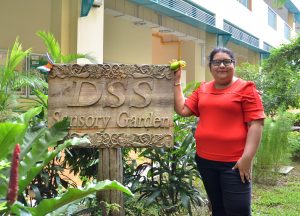Why Singapore’s English Teachers Should Embrace Singlish, Not Fight It
Is it time for Singaporean educators to embrace Singlish as a legitimate learning tool? What the Research […]
Read More
The Association for Persons with Special Needs (APSN) Delta Senior School is committed to placing its students in employment upon graduation. A teacher shares with us how the school equips its students to be work-ready through its various customized programmes.
A Swensen’s restaurant, Giant superstore and Uniqlo-like retail outlet – these are facilities that would not feature in a typical Singapore school. At APSN Delta Senior School (DSS), however, some classrooms are intentionally built to replicate real-life work environments.
This is part of the school’s on-going efforts to prepare its post-secondary school learners with mild intellectual disabilities to enter the workforce upon graduation.

Gurvinder Kaur Gill works closely with colleagues from APSN Delta Senior School to facilitate her students’ transition from school to work.
“Every student with special needs is essentially a student with different learning needs,” says Gurvinder Kaur Gill, a numeracy teacher at APSN DSS. “The best way for educators to support such students is to understand their different needs and customize our pedagogical approaches accordingly.”
The school conducts training programmes in four vocational areas, namely food and beverage operations, landscape operations, hotel and accommodation services, and retail operations. Each training programme lasts up to 5 years including work attachment, and leads to a Workforce Skills Qualification (WSQ) Certification that validates students’ competencies in their chosen vocation.
“Our curriculum is simplified and made bite-sized to address the learning needs of students in areas such as memory retention,” explains Gurvinder. “We also incorporate a structured four-step model (see box story below) in our teaching approaches.”
While the school’s foremost priority is to equip students with vocation-specific skills, its curriculum also emphasizes Standards of Work Performance (SWP), which consists of five areas: attendance and punctuality, grooming and hygiene, relating with others, work behaviours, and self-regulation.
“APSN DSS stresses on SWP because it concerns attitudes and soft skills for the workplace, which reflect students’ work-readiness,” explains Gurvinder. “Teachers will observe students in these areas during lessons. If we detect problems, we will devise and implement intervention strategies to address the issue.”
The school also works closely with partner employers in setting up training facilities within its premises to enable students to adapt easily to an actual work environment.
There are mock-ups of actual restaurants, kitchens, retail outlets and hotel rooms on campus, which exemplify how the physical infrastructure of APSN DSS is designed to complement the school curriculum and foster continuity between school and work.
“As a vocational training school, the next step – after supporting our students – is placing them in open employment,” Gurvinder shares. “We thus simulate real-life work environments for them to maximize their chances of securing employment and ease the transition from school to work.”
“The best way for educators to support students (with special needs) is to understand their different needs and customize our pedagogical approaches accordingly.”
– Gurvinder Kaur Gill, APSN Delta Senior School
To further supplement students’ vocational training, APSN DSS’s curriculum also features classes in literacy, numeracy, personal management, and fitness and health.
Gurvinder, who is with the numeracy department, designs lessons, activities and assessment tasks related to numeracy. Nevertheless, her lessons do not focus solely on mathematical concepts. In fact, they centre on mathematical life skills.
“We help students to relate the concepts of time, scheduling and measurement to their workplace,” explains Gurvinder. “So it is not just math; it is about life skills.”
Educators from different departments also work closely and share feedback with one another to highlight any difficulties that students are facing.
“For instance, the numeracy department may receive feedback from vocational trainers regarding students’ difficulties in measurement, such as weighing items,” explains Gurvinder. “We will then work on the feedback and come up with hands-on activities to clarify concepts and correct students’ mistakes so that they will not face similar problems in the workplace.”
The vast majority of APSN DSS students are successful in securing employment upon graduation, which shows that the institution’s pedagogical approaches are effective in catering to its students’ learning needs.
“While students with special needs may take different educational journeys, their outcomes in life can be the same as that of their mainstream counterparts.”
– Gurvinder, on the different journeys that her students go through
Besides employment, further training at higher education institutions is another pathway that students may take after graduation.
“We have had a few graduates each year who go on to pursue further education at the Institute of Technical Education, which is a mainstream educational path,” Gurvinder shares. “This shows that while students with special needs may take different educational journeys, their outcomes in life can be the same as that of their mainstream counterparts.”
Ultimately, Gurvinder hopes that as more individuals with special needs are employed, they will gain recognition for their ability to contribute to society and inclusion becomes more of an everyday reality in Singapore.